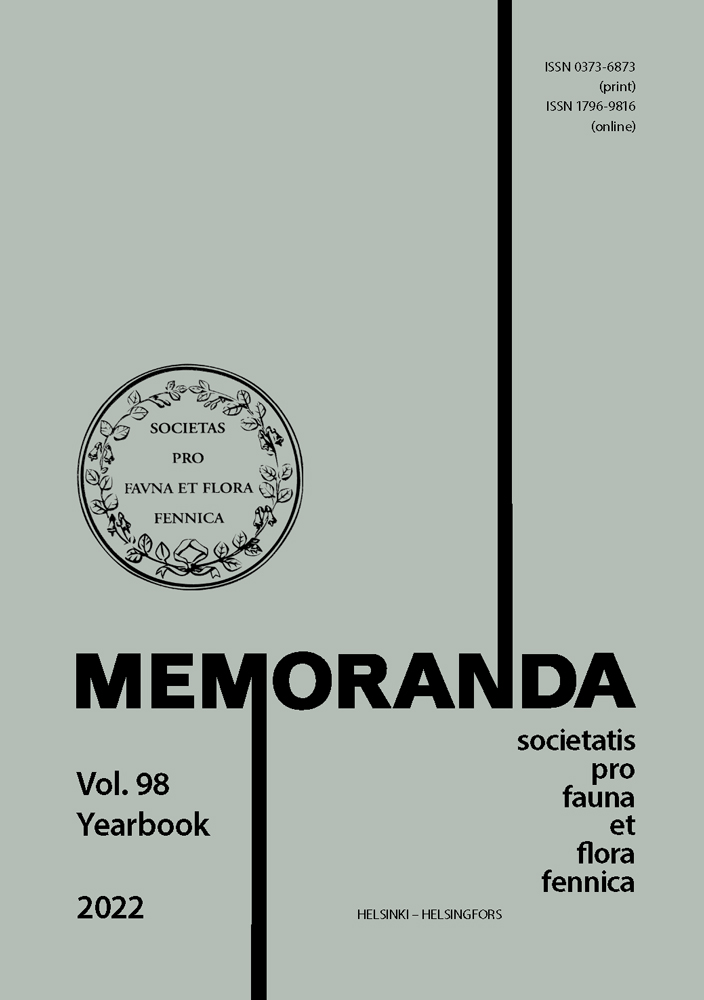Mesozooplankton trends and distributions in pelagic and littoral habitats of the Archipelago Sea, the northern Baltic Sea, SW Finland
Abstract
This study investigated the occurrence and diversity of zooplankton communities in the Archipelago Sea, the northern Baltic Sea, SW Finland. Zooplankton was sampled from rocky shores in three regions: the inner archipelago (at Paimionlahti), the middle archipelago (at Seili), and the outer archipelago (at Utö) in autumn 1997. Samples were taken from the surface layer (0–1 m) in the coastal zone, i.e., in the littoral and in the nearby pelagic areas during the day and during the night. Zooplankton taxa were identified for groups of cladocerans (Cladocera), copepods (Copepoda), or rotifers (Rotifera). We investigated whether the archipelago zonation is observable also in the distribution of zooplankton communities, mainly on the basis of species numbers, abundances, the Shannon-Wiener (H’) and the Simpson Diversity (D) Indices, and whether there are differences in species numbers and diversity between the day and the night (through vertical migration) or between the littoral and the pelagic habitats. Comparisons were made with non-parametric ANOVA and generalized linear models (GENMOD). Analyses revealed that the archipelago zones can, to a certain extent, be observed on the basis of the numbers of zooplankton species. Species numbers and diversity generally increased towards the outer archipelago in both the littoral and the pelagic habitats. The increase can be explained mainly by the seawater salinity. Zooplankton diversities between the day and night and between the littoral and the pelagic habitats were different in the inner and outer archipelagos that can be explained by zooplankton horizontal and vertical migrations or drifting. The results are discussed considering the zooplankton community changes that have occurred in the study area since 2000.




